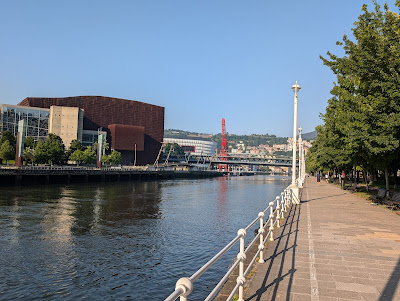The Camino Norte
The Camino Norte
Travel one of the oldest routes to take pilgrims to pay homage to the relics of St James in Santiago de Campostela. This camino may be older than the well-known and highly used Camino Francés.
History
Around 820 AD, medieval European kings started arriving at Santiago de Campostela to honor the tomb of St James. These kings used the northern route to avoid the still Moor-controlled other parts of Spain.
As the Spanish kings extended their conquests further south, the Camino Norte continued to increase in importance. At some point in time, though the Norte declined in popularity, use and significance.
Today many pilgrims walk the Norte for vaious reasons, to include:
- avoiding the more crowded Camino Francés
- enjoying the beauty of the ocean and the mountains.
From Irun on the French-Spanish border, the Camino Norte runs for 865 km ( approx 520 miles) along the north coast of Spain.
On this journey, I hope to experience four culturally distince regions of Spain: the Basque Country, Cantabria, Asturias and Galicia.
The scenery along the Norte is significantly different than the inland Camino Francés. Many days I will walk along the ocean. I cross mountain range after mountain range. With any luck, I will be able to spend the evening with my feet dipping into the ocean on sandy beaches before any evening cafe con leche in a sea-side bar.
Allowing for twenty days of real hiking ( and having time to stop and explore), a reasonable distance this year is from Bilbao to Aviles, some 200 miles.
País Vasco
Irun to Bilbao: There are large cities with many sights, and offers an exciting city life with lots of night-time activity
Bilbao : The cultural meaning of pinchos
Creativity is at the heart of the "pincho". With an infinite choice of ingredients, there are an infinite amount of pleasures for the taste sensations. Having "tapa" hopped while in the other parts of Spain, I hope to replicate the experience here, but with a Basque flavor.In contrast to the rest of Spain, a pincho is not considered free in the Basque Country.
Reinoso offers Roman settlements of Juliobriga.
19th-century archtecture: The town of Comillas boasts the Palace of Sobrellano and the Pontifical University, along with Gaudí’s El Capricho, the Cemetery and Llimona’s Angel as instances of Catalan neo-Gothic and Modernism.
Since I will at least a week of hiking in this autonomous community, other major dishes include that I wish to eat are beans with clams (fabes con almejas), Asturian stew, Cachopo (breaded veal / ham / cheese with eggs), frixuelos ( a crepe dish), and rice pudding.
Cantabria
Cantabria has a rich history spanning from before the written record to contemporary architecture.
At Pico Las Nieves I hope to have the opportunity to explore megalithic remains (large stone structures, some going as far back as 5000 B.C.).
Juliobriga
Reinoso offers Roman settlements of Juliobriga.
Having scouted out numerous examples of church architecture on my journey along the Via Imperii from Berlin to Leipzig Germany in January of 2024, I want to continue my study of architecture with an exploration of the many Romanesque churches and Gothic churches in this region.
Comillas, Cantabria
Santander
Classic examples of 20th-century architecture include the the Real Palacio de La Magdalena, the Casino del Sardinero, the Palacio de Festivales de Cantabria concert hall and the Palacio de Deportes (Sports Centre).Asturias
Having enjoyed "fabada" (pronounced f-a-v-a-d-a) in other parts of Spain, I am looking forward to sampling the Asturian recipe. It is a rich stew made with the Asturian typical large white beans (fabes de la Granja), pork shoulder (llacón), morcilla, chorizo, and saffron.
Since I will at least a week of hiking in this autonomous community, other major dishes include that I wish to eat are beans with clams (fabes con almejas), Asturian stew, Cachopo (breaded veal / ham / cheese with eggs), frixuelos ( a crepe dish), and rice pudding.
Galicia
Given the time limits for this camino, I don't expect to reach Galicia this year. But I have traveled through this province many times in the past. It is beautiful and the food is delicious.
Why Make a Pilgrimage
The pilgrimage tradition dates back to the Middle Ages, and at that time was exclusively religiously motivated.No matter whether you want to travel alone or in a group: a pilgrimage immediately helps slow things down. Travelling longer distances on foot while being in harmony with nature has an almost meditative side effect.
Nowadays most people walk a pilgrimage for spiritual rather than religious reasons. Of course, many also hike these trails to take on the physical challenge.
Following the Camino Norte
Route marking: stylized yellow shell on a blue background. The closed side of the shell faces in the direction of walking. Traditionally, the Way of St. James is only marked in the direction of Santiago de Compostela.However, I will be using apps as a backup to following the path.







Comments
Post a Comment